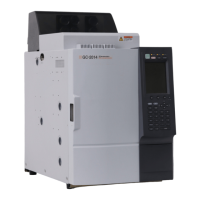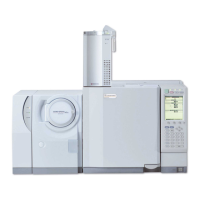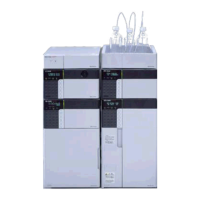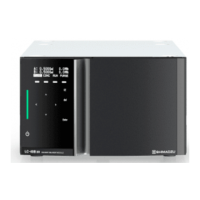12 Injection Port
12.5
12.
150
GC-2014
12.5Setting the Flow Rate Parameters
Q Linear velocity and carrier gas selection
In capillary analysis, the type and the flow rate of the carrier gas have a considerable effect
on the column efficiency. The figure below shows changes in the HETP (Height Equivalent
to Theoretical Plate) at different linear velocity valves for nitrogen, helium and hydrogen car-
rier gas.
Fig. 12.5.1 Effect on linear velocity and HETP for various carrier gases (H-V curve)
The graph above shows that the lowest HETP values are obtained when nitrogen is used as
the carrier gas and the linear velocity is set to a value a little less than 10 cm/s. However,
nitrogen is not a good carrier gas for capillary analysis for the following reasons.
(1) If the linear velocity deviates only slighty from the optimum value, the HETP increases
dramatically.
(2) To obtain the optional linear velocity, the flow rate must be low, resulting in long analysis
times.
Helium is frequently used as the carrier gas because the HETP is low over a considerably
wider linear velocity range starting at 20 cm/s.
The column efficiency of hydrogen is good at higher linear velocities than for helium. For this
reason, hydrogen can be used for rapid analyses. However, hydrogen is seldom used in
reality because it is extremely flammable, and therfore too dangerous.
Q Efficiency of an analysis
Usually, analyses are performed with a flow rate that is higher than the optimal flow rate, as
long as separation of conpounds is sufficient. This reduces the analysis time. For general
analyses on this system, setting the linear velocity to 30 cm/s is recommended.
The tables below show the column inlet pressure at which the linear velocity becomes
approximately 30 cm/s. Use the tables as the guideline for setting the column inlet pressure.
However, the inlet pressure also depends on the column type.
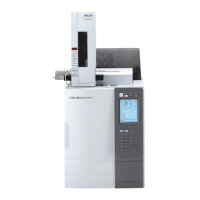
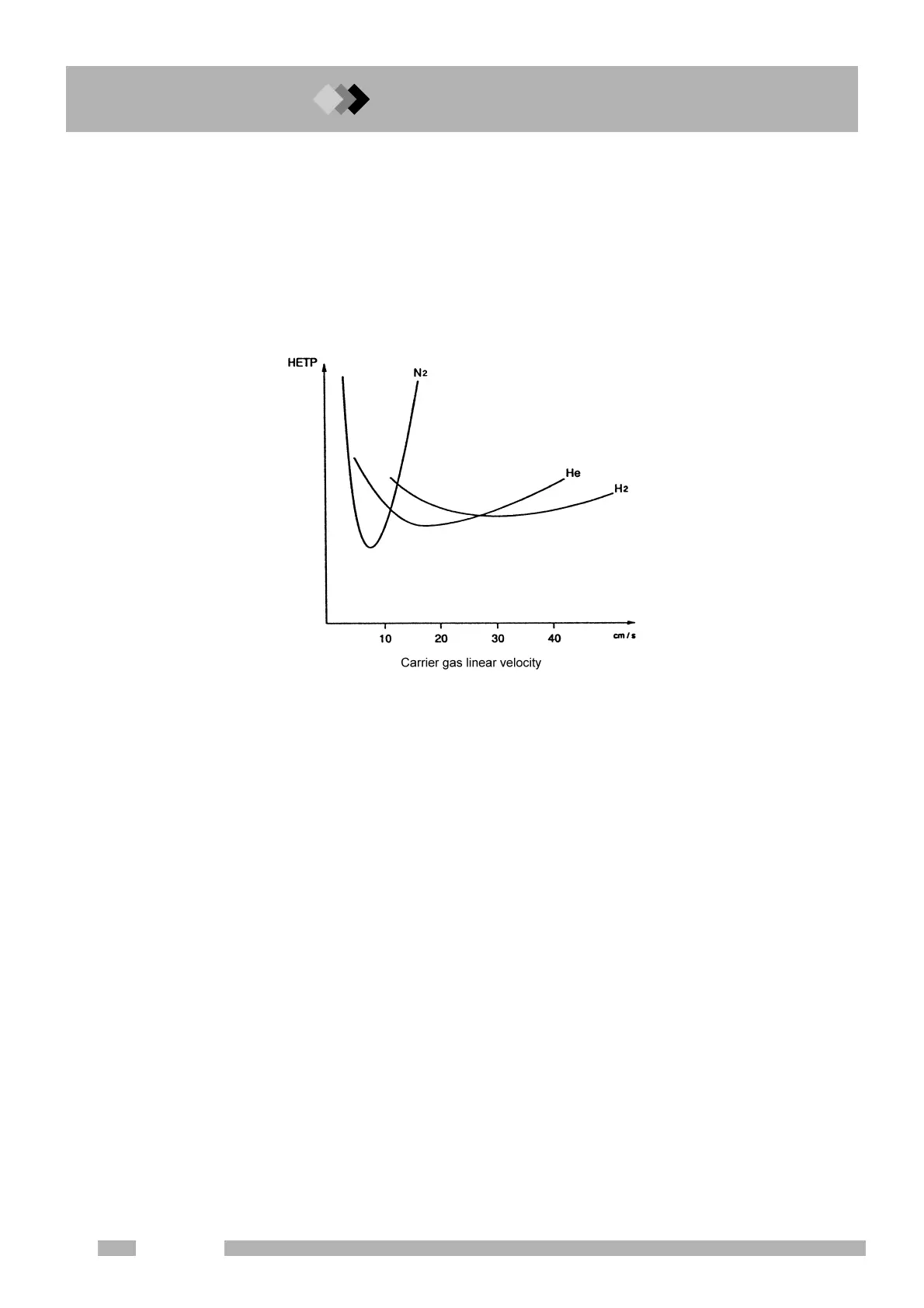